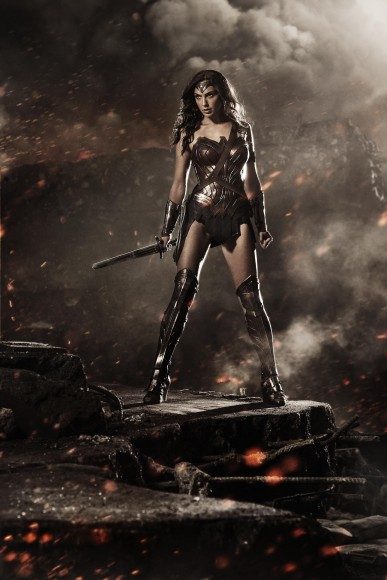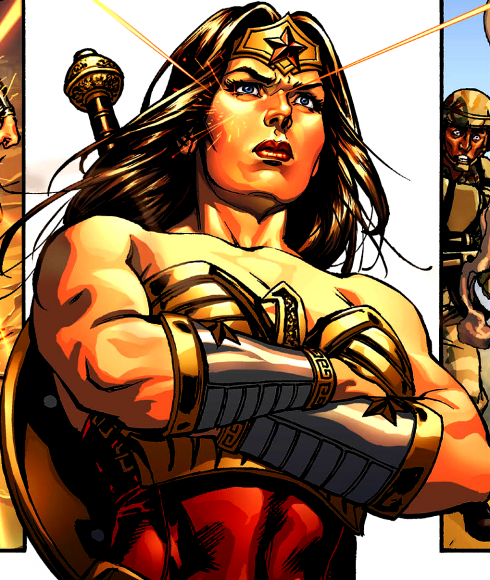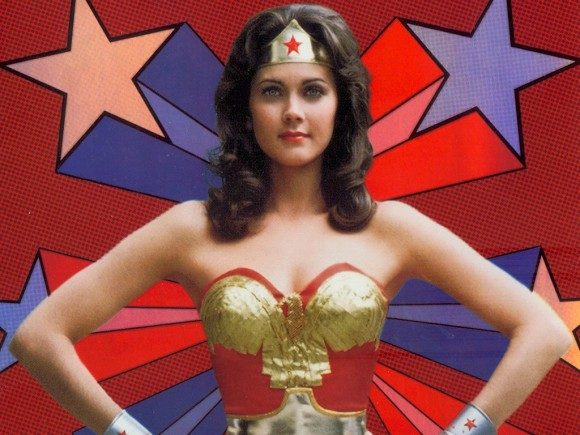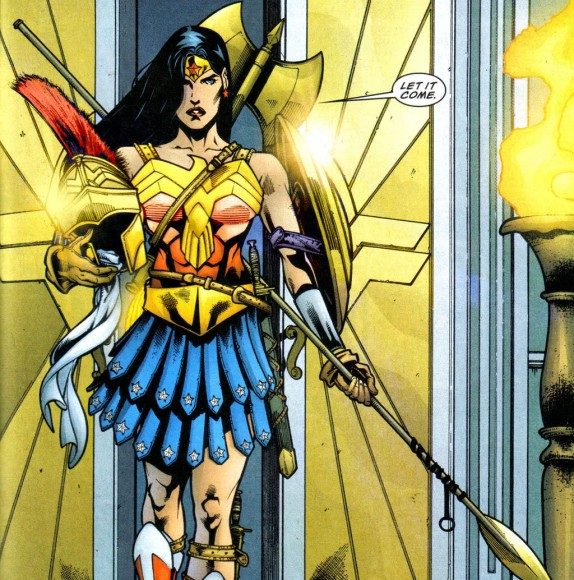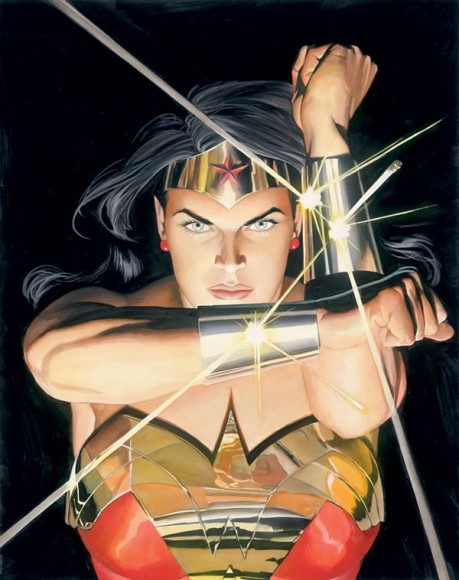Here’s a question: why is it that we still haven’t gotten a Wonder Woman mov- okay, okay, hang on. I can already hear your collective groan, but just bear with me. I know that this particularly topic is starting to go into dead horse territory, but, well, it’s a particularly fascinating, ever-relevant dead horse, so… yeah, let’s get into this. Once again.
San Diego Comic Con wrapped up a little over a week ago, and one of the most controversial and scrutinized announcements of this year’s Geek Mecca was dead centered on our beloved Amazing Amazon. We’ve known for a while that Diana Prince and her wondrous alter-ego are going to be a part of Zack Snyder’s upcoming Man of Steel sequel/theoretical Justice League-movie prequel Batman v Superman: Dawn of Justice, and we even got a first wave of controversy last December with the announcement that Israeli actress Gal Gadot had been chosen to step into her boots. That’s when we began to hear rumblings about whether she looked right for the part or not, but all of those early, somewhat nebulous arguments have ratcheted up in volume by an exponential factor with the revelation of the look she’ll be sporting in the film (see above). 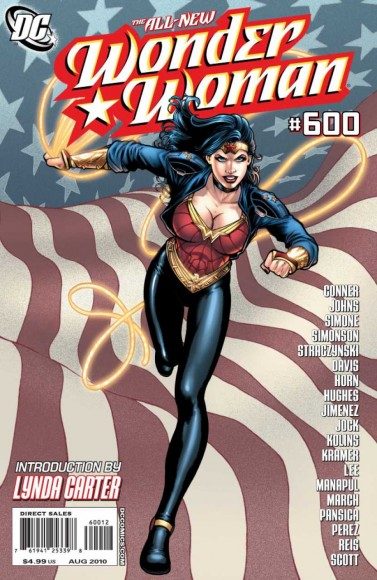

I’m not going to pretend that the evolution of a character’s look when they are adapted from one medium to another is not noteworthy. If nothing else, it can be an indicator of how well versed in the prime material the adapters are, or of what degree of veneration for the original is present in the new work. It can give us insight into the attitude the film will be taking towards its character, particularly if it’s one that has toed the line between empowered ass-kicker and pinup eye candy for most of her existence. But that’s just a small part of the decision making that goes into a character’s look. The other, arguably much more important, parts have more to do with integrating the character with the tone, thematic content, character outlook, and overall visual palette of the film. With Batman v. Superman, those are all things we know practically nothing about. The image that we got at Comic Con is probably best taken as an appetizer for that film, not as a be-all-end-all indicator of the role that Wonder Woman is going to be playing in this next phase of DC filmmaking. The fact of the matter is, you can make a one hundred percent great Wonder Woman film without the accouterments of the super-American breastplate, the Lasso of Truth, or the indestructible bracelets. I promise. The filmic portrayal of Diana will not sink or swim based on these elements, but on how well the film portrays the woman that exists underneath them.
Which takes us to the question of… who is Wonder Woman?
Yeah, a bit harder to answer than you thought, isn’t it?
For a very long time now, Wonder Woman has existed at the vertex of a lot of very odd grey zones, particularly in what elements of her character seep into mass public awareness and which don’t. She is, by far, the most widely recognized female superhero in spite of the fact that she is almost entirely absent from popular culture in any meaningful way. Wonder Woman has never gone out of print, but her books have never been as profitable or as popular as the other flagship titles. She’s been present in various animated shows and films, but always as part of a bigger Justice League or Super Friends set-up. If you want to see Wonder Woman in a live action, theatrically released film, you have to dig up this thing. Recent years have seen an aborted movie and two failed TV pilots, but nothing with any staying power. The last time that something other than a comic was successful under the title of Wonder Woman was when Lynda Carter was involved.
And yet we know her so well. When I say the words “Wonder Woman” there is a razor sharp image that comes into your head, an image that has remained remarkably unchanged in the seventy years since her creation. But it’s an oddly truncated picture, one that seems to exist independent of the stories that contain her. The word “Superman” triggers a similarly clear iconic image, but it also evokes his Space Moses origins, his double life as a reporter, his love affair with Lois Lane, his enmity with Lex Luthor, etc. Same with Batman. But to evoke Wonder Woman is to call to mind a few key symbols, not a particular character or narrative experience.
Which is a shame, because when you get into the particulars of who she is, the Amazing Amazon truly lives up to her name. To keep this… relatively short: Diana is the princess of a tribe of immortal Amazon warriors who live cut off from the rest of the world on the remote Paradise Island. She is, depending on what continuity you go by, either molded out of clay and granted life by Greek deities, or else the illegitimate daughter of Zeus (yep, that Zeus. As in this guy). But when a WWII fighter ace crash lands on the island and tells the Amazons about the rise of Nazism and totalitarian regimes, Diana decides that she must intervene in the outside world for the first time in centuries. She arms herself with a series of magical weapons, joins the Allied forces, and spends the next seventy years fighting evil regimes, megalomaniacal dictators, and the other more destructive forces of Greek mythology that have made their way to the modern world. (And if it feels like this description is someone’s mash-up of the recent Thor and Captain America movies with a gender-swapped lead… yeah, hold that thought)
All of that is not only awesome, it’s important. Just like knowing Bruce Wayne fights crime in part due to his guilt over his dead parents, knowing that Diana, a borderline divinity, nearly alone among her people left paradise to judge righteously the forces of evil is crucial to grasping the essence of her character. But if this is the first time you’re hearing any of that, well, you’re not alone. Unlike other superheroes who have had a steady stream of adaptations and incursions into other mediums to keep us acquainted with their particulars, Wonder Woman’s stories have remained hermetically sealed in the world of comics. Characters like Supes and Batman are so successful and enduring precisely because pop culture’s awareness of them strikes such a delicate balance between their iconography and their stories. Sure, things like a batarang or a big “S” emblazoned on a chest immediately take us to a recognizable place, but we can also get there through a series of narratives which establish and perpetuate the characters independent of those visual trademarks. With Wonder Woman, the scales have tipped so far in the direction of the icon that her superficial details are, in many ways, the only access points that we have to the character.
Now, this might get a bit into the-chicken-and-the-egg circular logic, but I honestly believe that this unique space that Wonder Woman inhabits is one of the main reasons we haven’t yet seen a solo film starring Diana Prince. I mean, what are the other reasons commonly cited for the lack of traction on this front? Her weird, ancient mythology origin story is too complicated! Umm, it’s not any more convoluted than Thor’s, and we were able to roll with that. She doesn’t have a standout villain to fight! All right, sure, but aside from alcoholism neither does Iron Man, and, again, we we’re doing fine with that. She’s too pure and moralistic a hero for this age of grittiness! How much money did Winter Soldier make again? There’s never been a successful superhero movie led by a woman. Okay, fine, but this argument feels less relevant when The Hunger Games are around. Hell, Kill Bill proved that audiences were ready to embrace a female lead in something as heavily male-coded as a revenge martial arts Western and that was ten years ago.
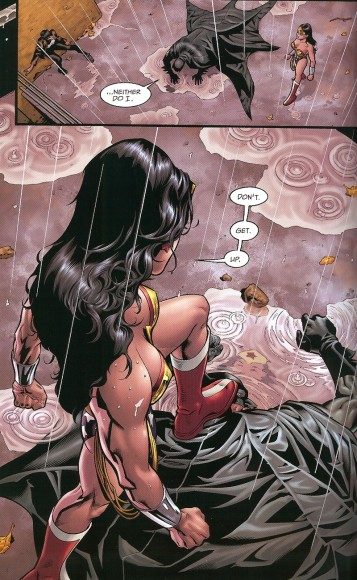

And then there’s the complaint that she’s not badass enough to hold down her movie. Umm, yeah, about that?
I think that all of these things are just superficial problems that mask the biggest issue at play. The greatest challenge facing this theoretical film is the task of reversing seventy years of the character existing largely as a series of signifiers in a vacuum. Consider what Joss Whedon, screenwriter for that previously mentioned defunct Wonder Woman movie from a few years ago, had to say about the challenges of making the character work on a big screen:
Besides [Wonder Woman’s] great origin story, there’s nothing from the comics that felt right 100 percent, no iconic canon story that must be told. Batman has it made — he’s got the greatest rogues gallery ever, he’s got Gotham City. The Bat writes himself. With Wonder Woman, you’re writing from whole cloth, but trying to make it feel like you didn’t. To make it feel like it’s existed for 60 years, even though you’re making it up as you go along. But who she, and what the movie, is about, thematically, has never been a problem for me. But the steps along the way, it could be so easy for them to feel wrong.
This is the problem that has been endemic for this character for so long. We have a strong sense of who she is, of what “feels right” for Wonder Woman, but what is the story or character arc that is going to give substance to that very generic list of superficial traits? There’s no easy answer to that question.
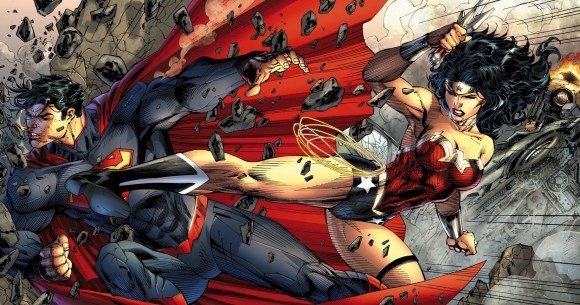

I’ll be honest: this isn’t particularly related to what I’m saying, but I just really like images of her beating up these two guys.
Which is not to say that it’s a hopeless enterprise! In fact, I think that there’s a recent film that should be studied by anyone looking to make a Wonder Woman movie: Casino Royale. When Martin Campbell and his creative team set out to make an origin story for 007, James Bond had arrived at a place similar to where Wonder Woman is now, even though he’d gotten there by the opposite route. After twenty formula-driven films, James Bond had been reduced to a series of instantly recognizable symbols. The suit, the Aston Martin, the shaken-not-stirred… these were all things that felt James-Bond-y, but they were disassociated from anything concrete.
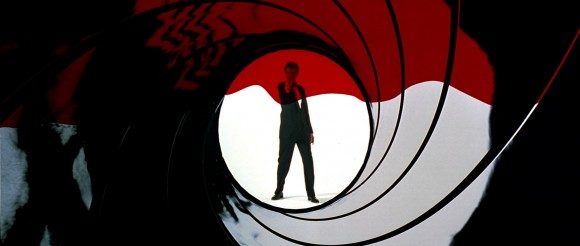

The perfect cinematic icon. Recognizable. Unmistakable. And completely unengaging on a personal level.
Casino Royale tackled this head on by starting with a Bond that didn’t have any of these things, gradually showing us how he became the emblematic figure that we’ve come to know. Just consider what that film did for the gun barrel shot, something that had been present in almost every Bond film to date. Before Casino Royale it had just been a visual signature for the series, but by the time Campbell and company were done it had been given a new context and new meaning. They did this by grounding it in a specific moment in the character’s life. We learn that there’s a specific story behind the famous shot: it’s the first person that Bond ever killed, the start of his road towards becoming a double-O agent. That little bit of visual flair isn’t just a calling card anymore; it’s imbued with personal meaning and weight. Suddenly the fact that it’s the traditional way to open a Bond film makes a lot more sense.
This is exactly the evolution that Wonder Woman needs to undergo, a movement towards the concrete and the specific that she’s been denied for so long. This isn’t something revolutionary or impossible – most of the iconic signifiers that make up our image of Wonder Woman could either be given very specific character-motivated reasons for existing, or they already have them. (For example, did you know that her bracelets not only have a proper name but a very specific backstory and raison d’etre that’s both really messed up and kinda badass?) Mostly, we just need someone to start telling Wonder Woman stories that aren’t contingent on the artifacts of her existence. Batman has existed in more forms than some would care to admit, but the simple truth is that there is an extensive backlog of stories that explore and expand his character in a multitude of compelling channels. Any Wonder Woman movie won’t be able to tell all versions of the character at once, but it can damn well do more than hit only the most superficial common denominators.
Batman v Superman: Dawn of Justice will be released in 2016, and it will feature Gadot’s Wonder Woman. A solo film follow up is tentatively in the works, and slated for release in July 2017. There are many ways in which these films’ portrayal of Diana Prince could go right, and (depending on who you ask), many more in which it could go horribly, horribly wrong. But I honestly think that few things could be as bad as her stepping into Dawn of Justice fully formed, dressed in her full costume and armed with lasso, sword, and tiara. If that happens, if we don’t get a chance to meet the character underneath all of that iconography before the proceedings get underway, we may not be able to break out of the cycle that we’ve been stuck in for past forty years. If that happens and we don’t care as much as we’d like to, it won’t be because Wonder Woman is too complicated or she’s too old-fashioned for kids these days, and it definitely won’t be because she’s a female superhero. It’ll be because we will, once again, be stuck engaging only with the iconic idea of a female superhero rather than a fully formed incarnation of one.

